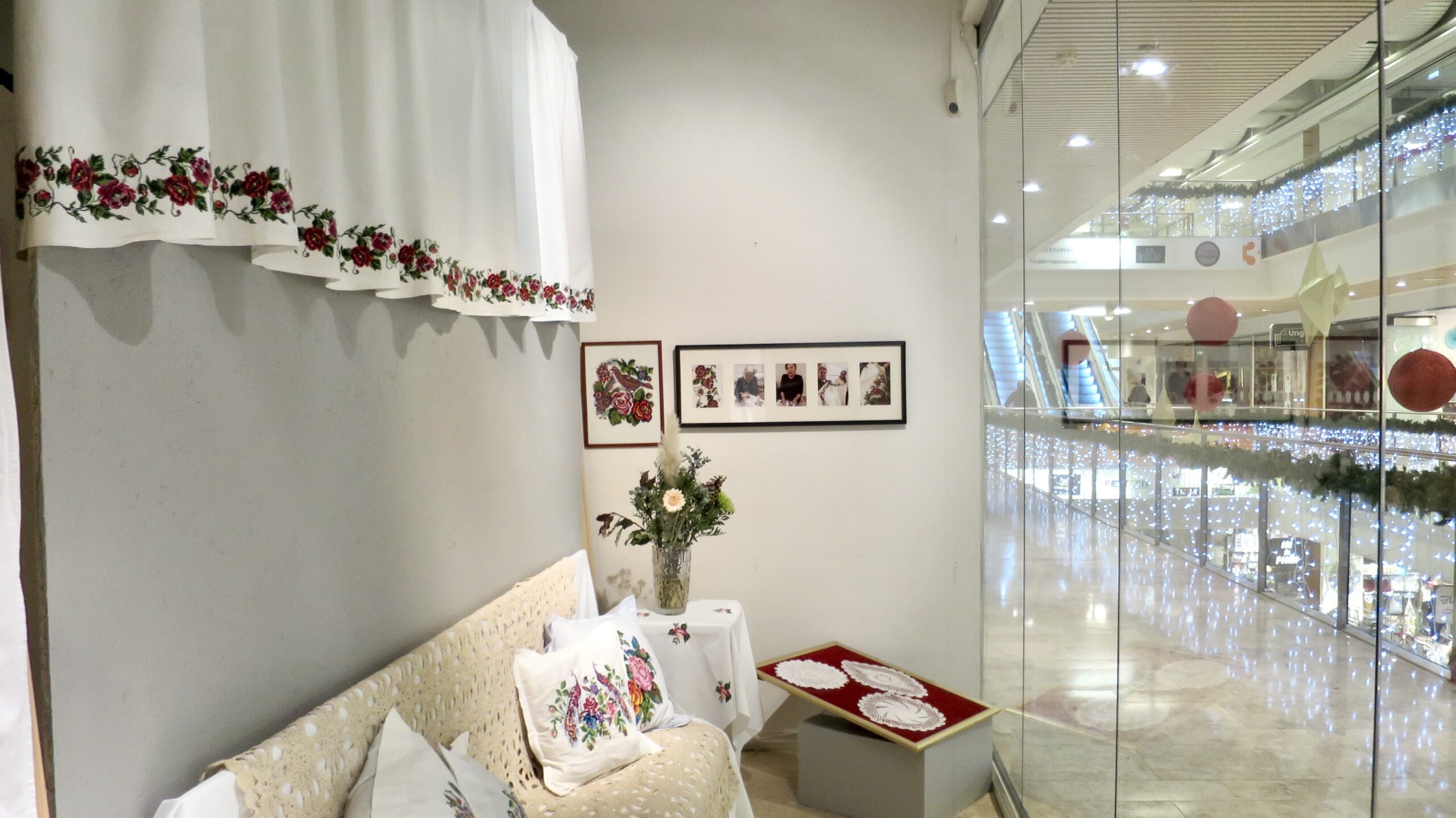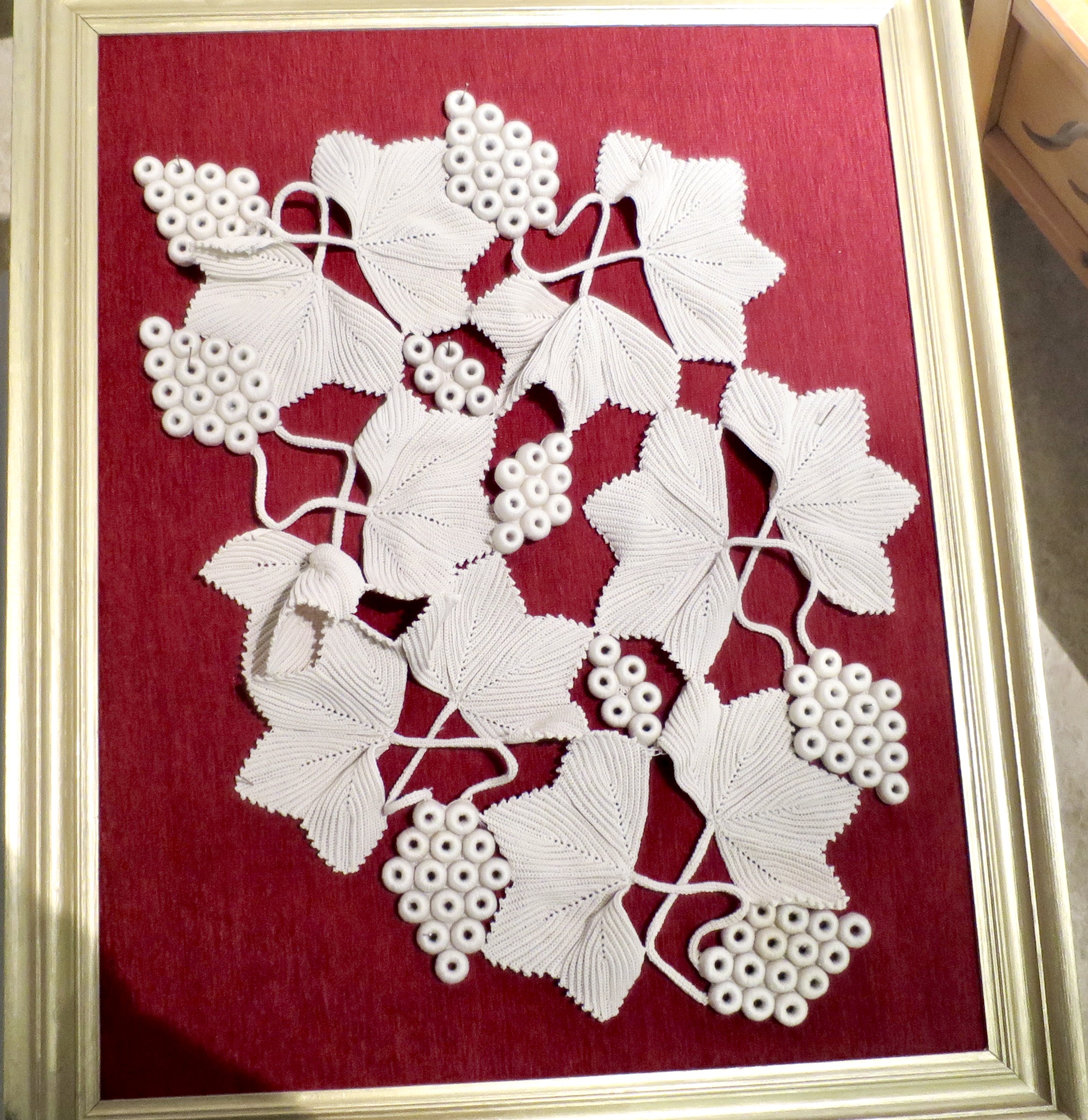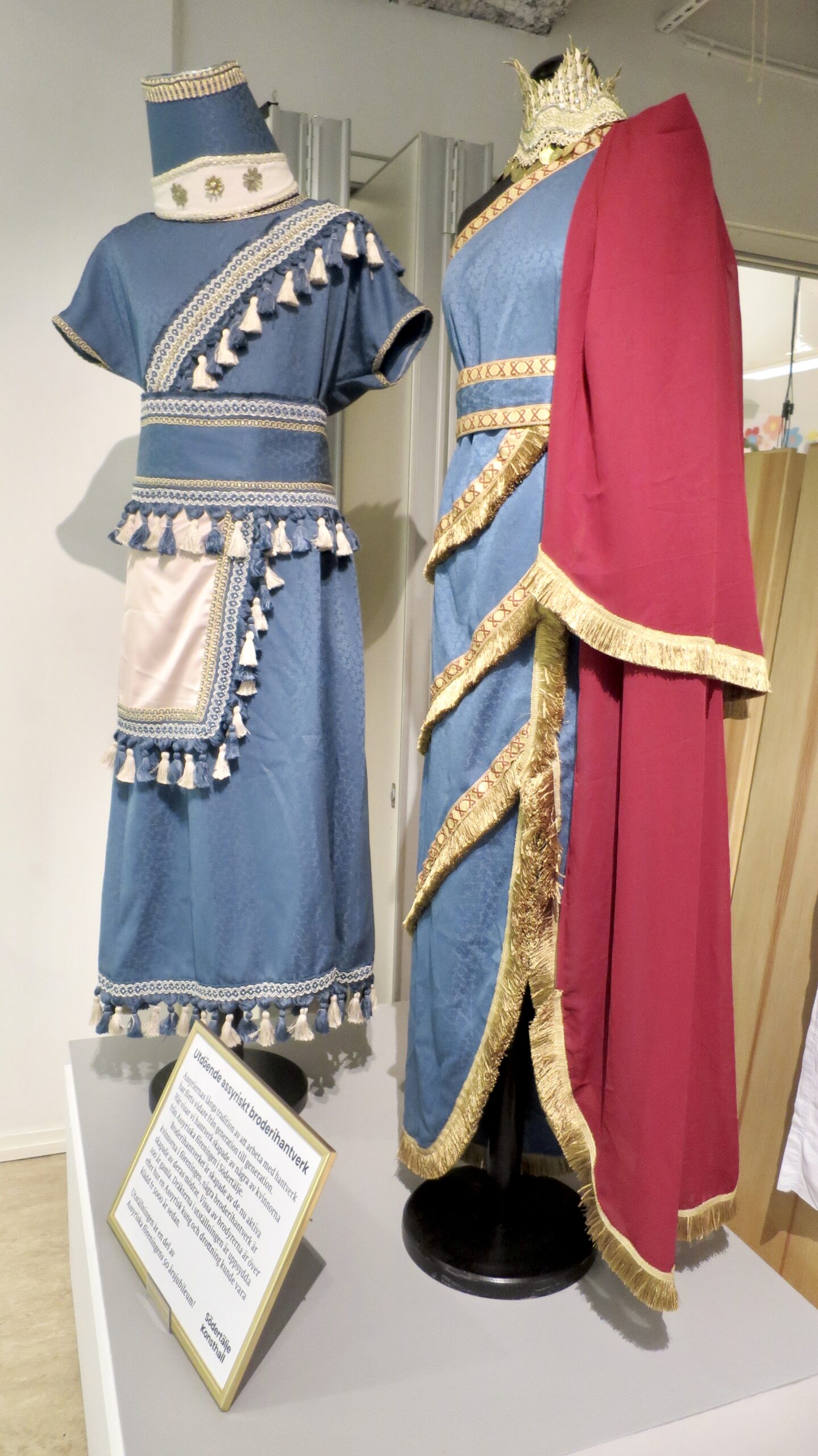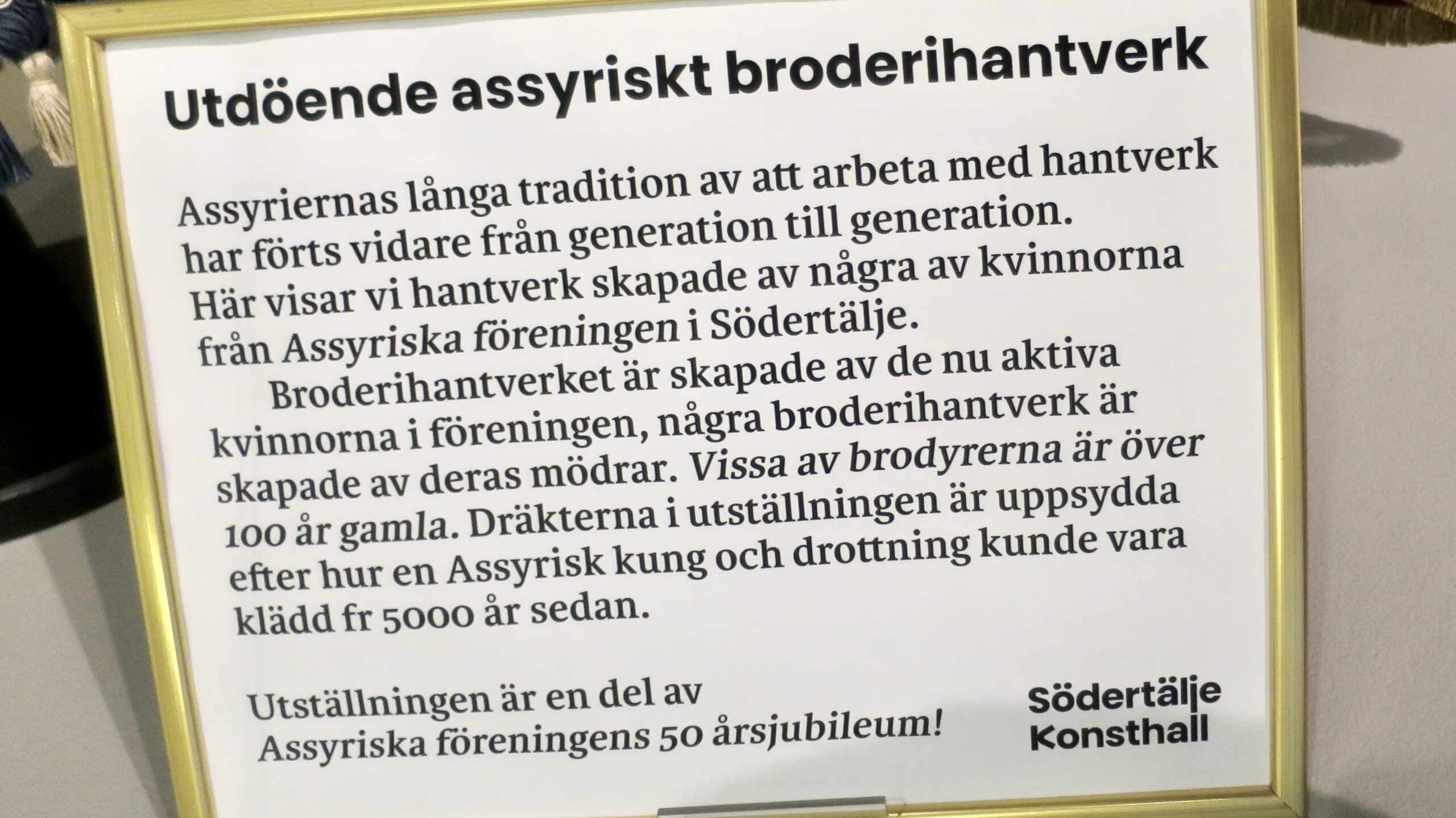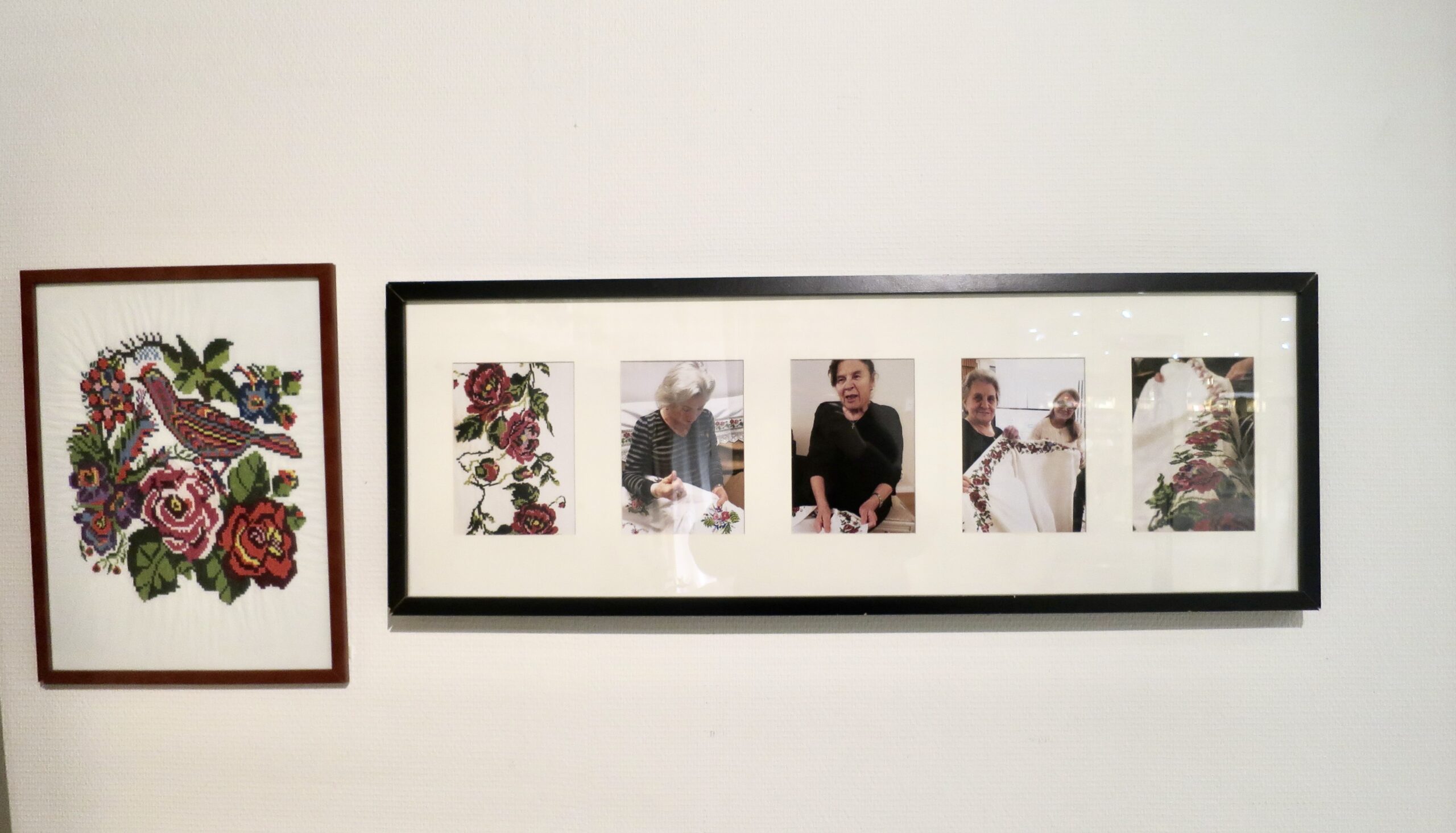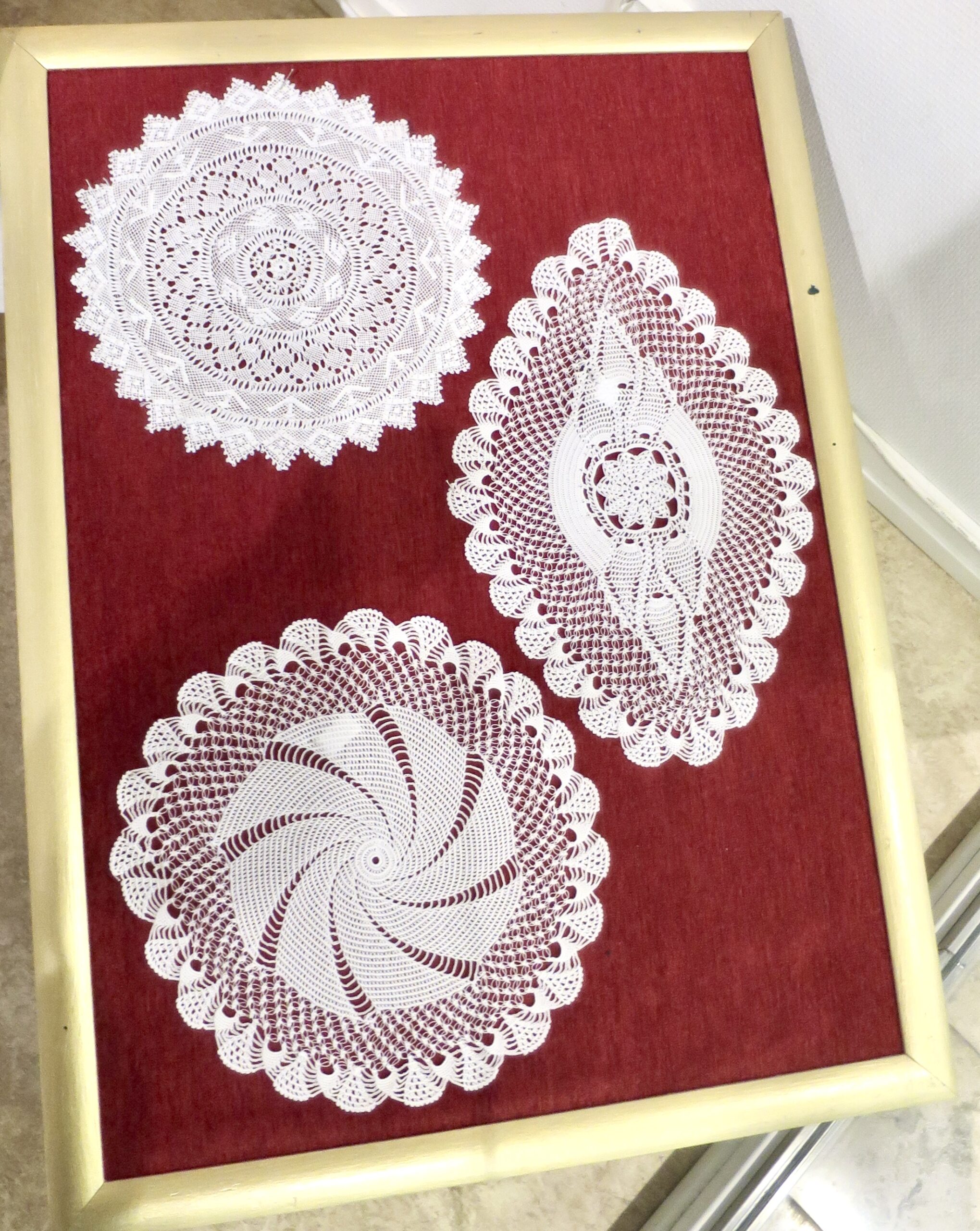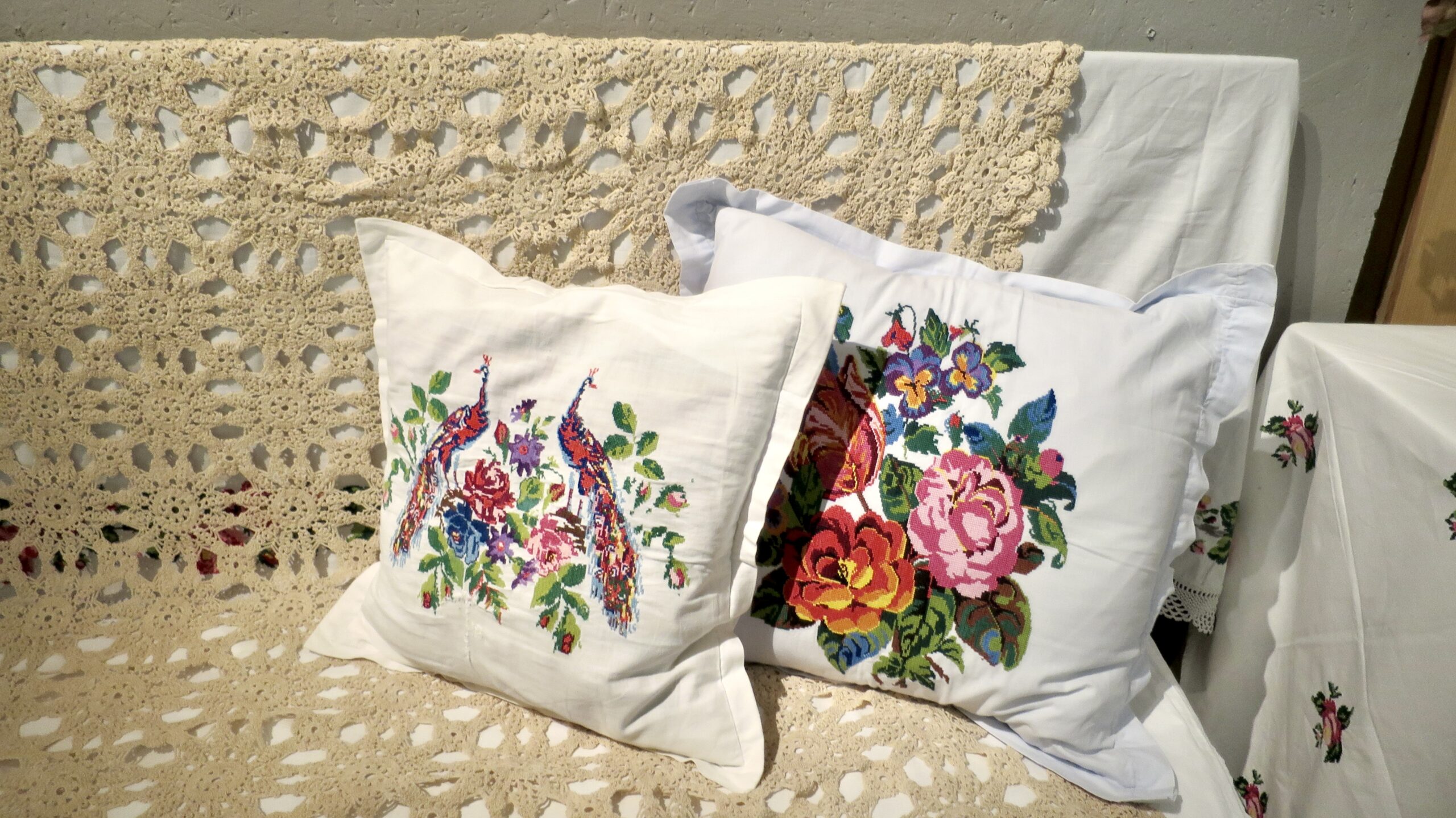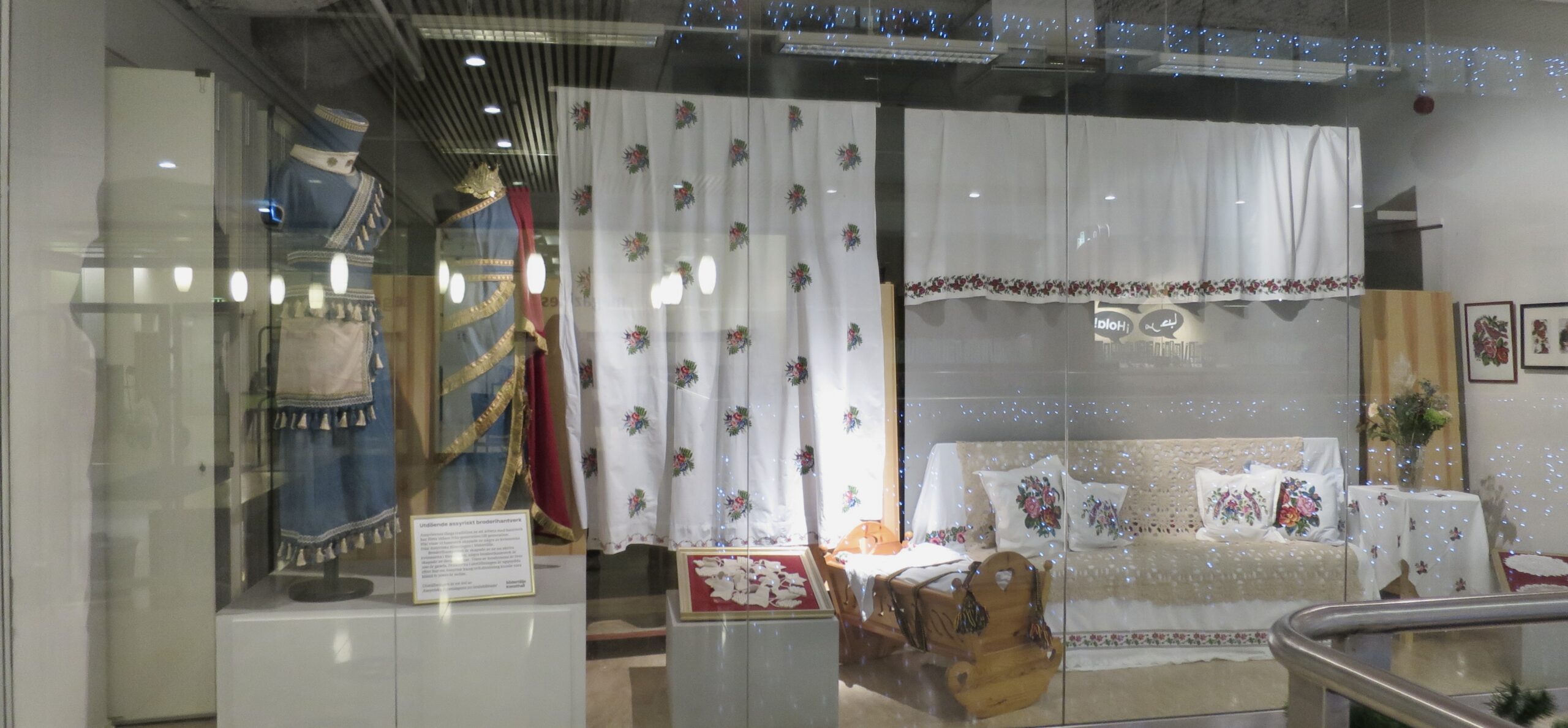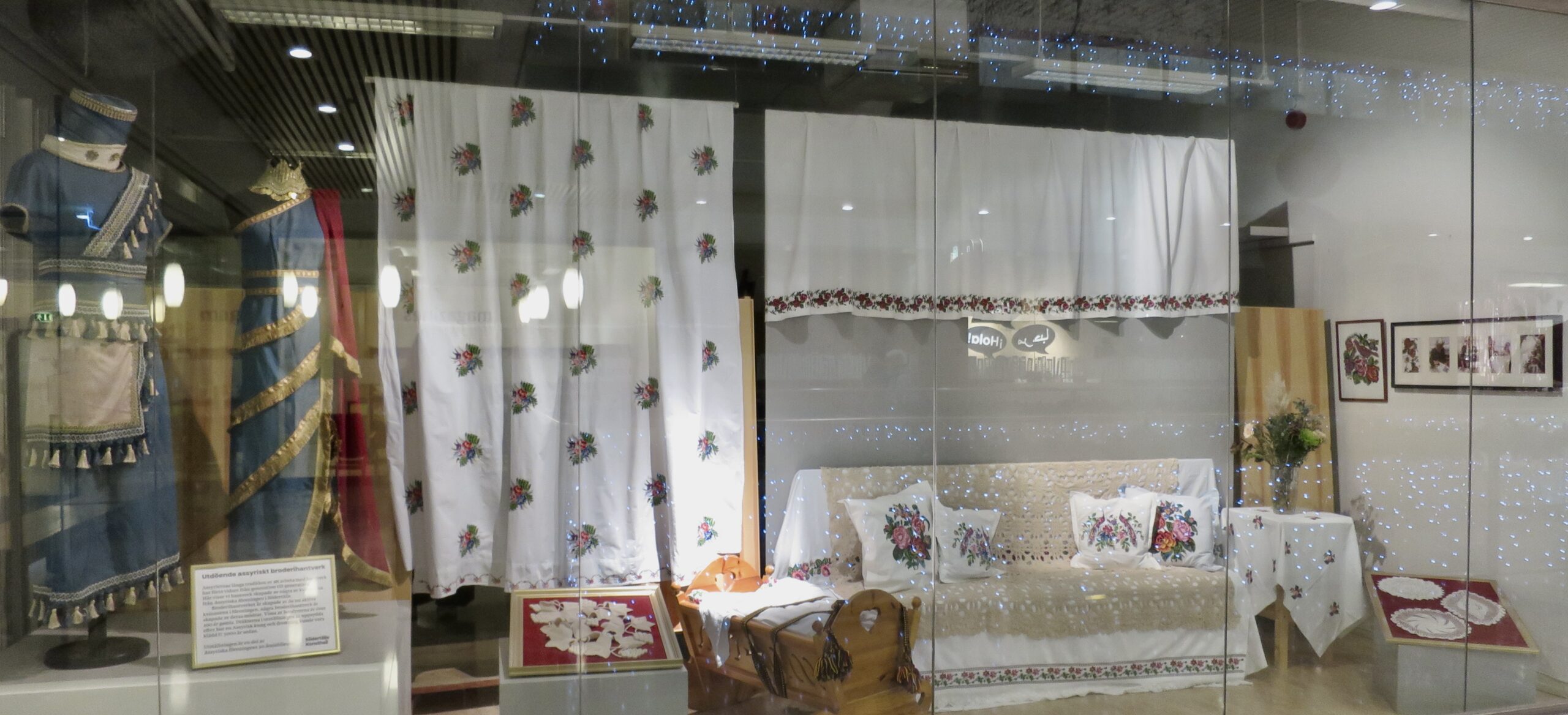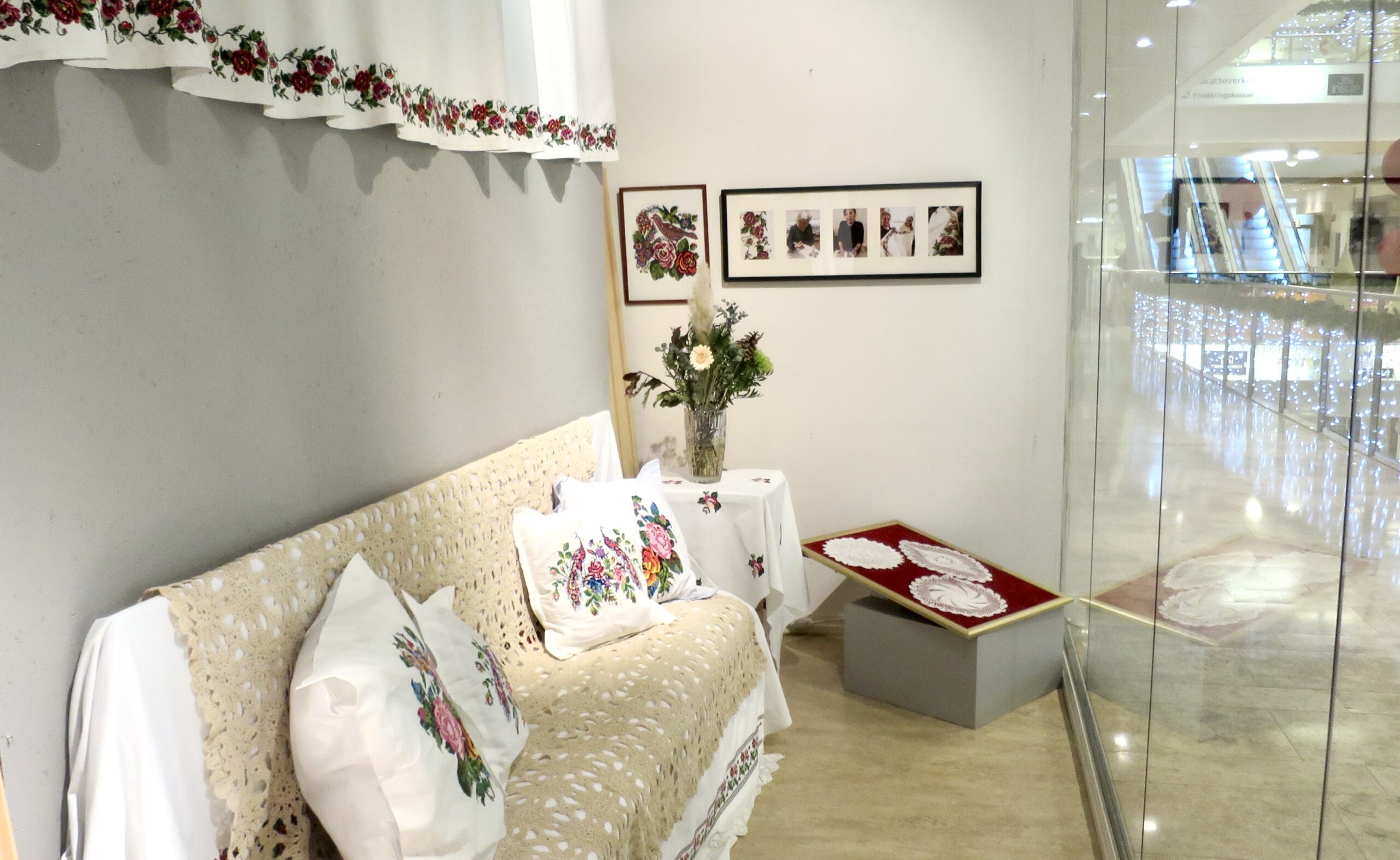
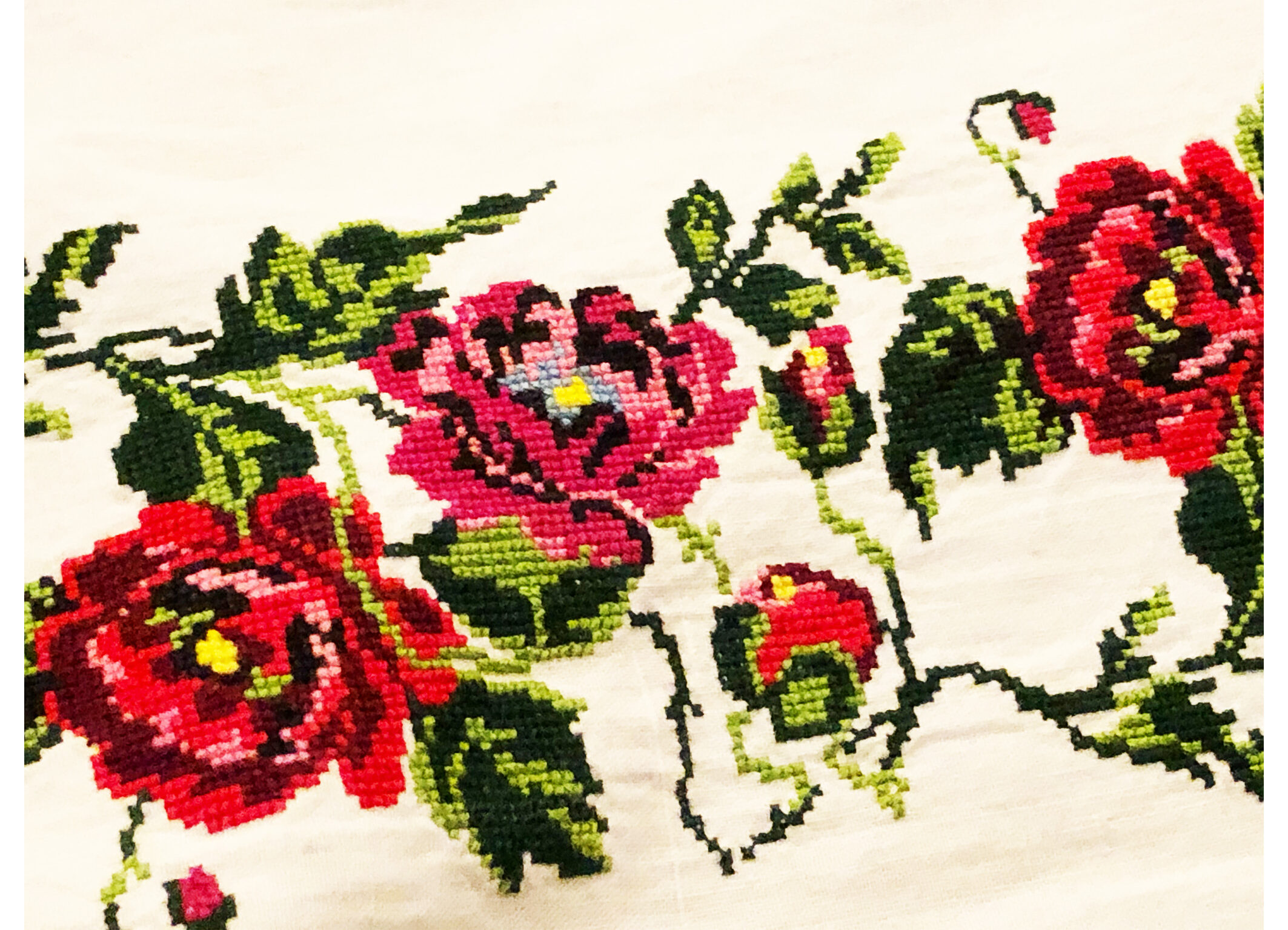

The Assyrians’ long tradition of working with crafts has been passed down from generation to generation. In connection with the Assyrian history and culture, the Assyrian women from the Assyrian Associa-tion are now showing their own and their mothers’ embroidery work in Södertälje konsthall. The Assyrian association shows handicrafts created by the active women in the association. We get to see fabrics, embroideries and other decorations that tell us about Assyrian history and culture. The craft is strongly linked to Assyrian women.
In Midyat, today’s Turkey, the women took care of the housework and how the crafts were a way for the women to create a community, a beautiful home and an income of their own. Education for girls was very rare, and thus girls and young women engaged in domestic and manual work. The story tells of how the work of women and men in the cotton fields was transformed into sheet fabric that the women then used for their embroideries. Enterprising women were able to take orders for embroidery and passed on embroidery work to the other women in the neighborhood. The small earnings were shared between the women who thus earned a small penny for each embroidered garment or piece of fabric. It could be beautiful floral ornaments, peacocks in vibrant colors or imaginative abstract embroidery patterns on decorative cushions for the divan and bedspread, or patterns on curtains and tablecloths. The long tradition of working with handicrafts has been passed down from generation to generation.
Embroidery decoration on textiles was very common in Assyrian homes, especially at Tur Abdin in south-eastern Turkey. Most of the embroidery works in the exhibition are at least 40-50 years old, some are even older, 60-70 years. Lama Shabo, Yildiz Awrohum, Luciye Haidari and Marin Haidari embroidered several of the works in the exhibition themselves as young girls. Yildiz Awrohum embroidered the textiles on the divan and Lama Shabo embroidered the large niche curtain on display in the exhibition, as a 12-13-year-old. The knitted and crocheted tablecloths in the glass case are made with thin cotton thread and a thin needle. They were used to decorate tables, shelves and glass cabinets.
The Assyrian Association in Södertälje
The Assyrian Association was founded in 1971 and was the first Assyrian association in Europe. The Assyrian association was founded in Södertälje by the first refugee group of stateless Assyrians who first ended up in a refugee accommodation in Alvesta in Småland in 1967. They then came to various places in Sweden, some of which were families who arrived in Södertälje. There was a strong need for a meeting place and social network for the newly settled Assyrians who thus organized themselves and founded the association. The association is based in its own premises in Hovsjö today.
The history of the Assyrians and the 1915 genocide
The Assyrians, who originated in Mesopotamia, are today scattered all over the world. Due to political and religious conflicts in the Middle East, the Assyrian minority has been exposed to negative consequ-ences. Through threats, oppression, persecution and violence, the ethnic group has been driven into exile. Just over 100 years ago, the Assyrian people suffered one of the first genocides of the 20th century, Seyfo (which means the sword). The genocide also affec-ted the other Christian ethnic groups Armenians, Assyrians/Syrians/Chaldeans and Pontic Greeks. The ethnic groups were massacred and deported in large numbers as the ruling Young Turks wanted to create an ethnically and religiously homogeneous state. Between 300,000 and 500,000 Assyrians are estimated to have fallen victim to the genocide in 1915. The devastation in the Assyrian villages in southeastern Turkey was thus enormous. The genocides that took place between the years 1914 and 1923 left a deep mark on the Assyrian people and something that still affects them today.
The pain of the survivors and future generations has been compounded by the Turkish state’s denial of the genocide to this day. In several countries where the Assyrians come from, the people group is not recognized as an ethnic minority or as an indigenous population. This means that the practice of Assyrian culture, language teaching, forming ethnic organizations or own schools is prohibited. There is thus an enormous thirst and longing for cultural experiences in their own language by the Assyrian population.
This means that it is important to try to preserve and practice culture through, for example, literature, art, theater and music.
Welcome to see the exhibition in our window during Lunagallerian´s opening-hours!

